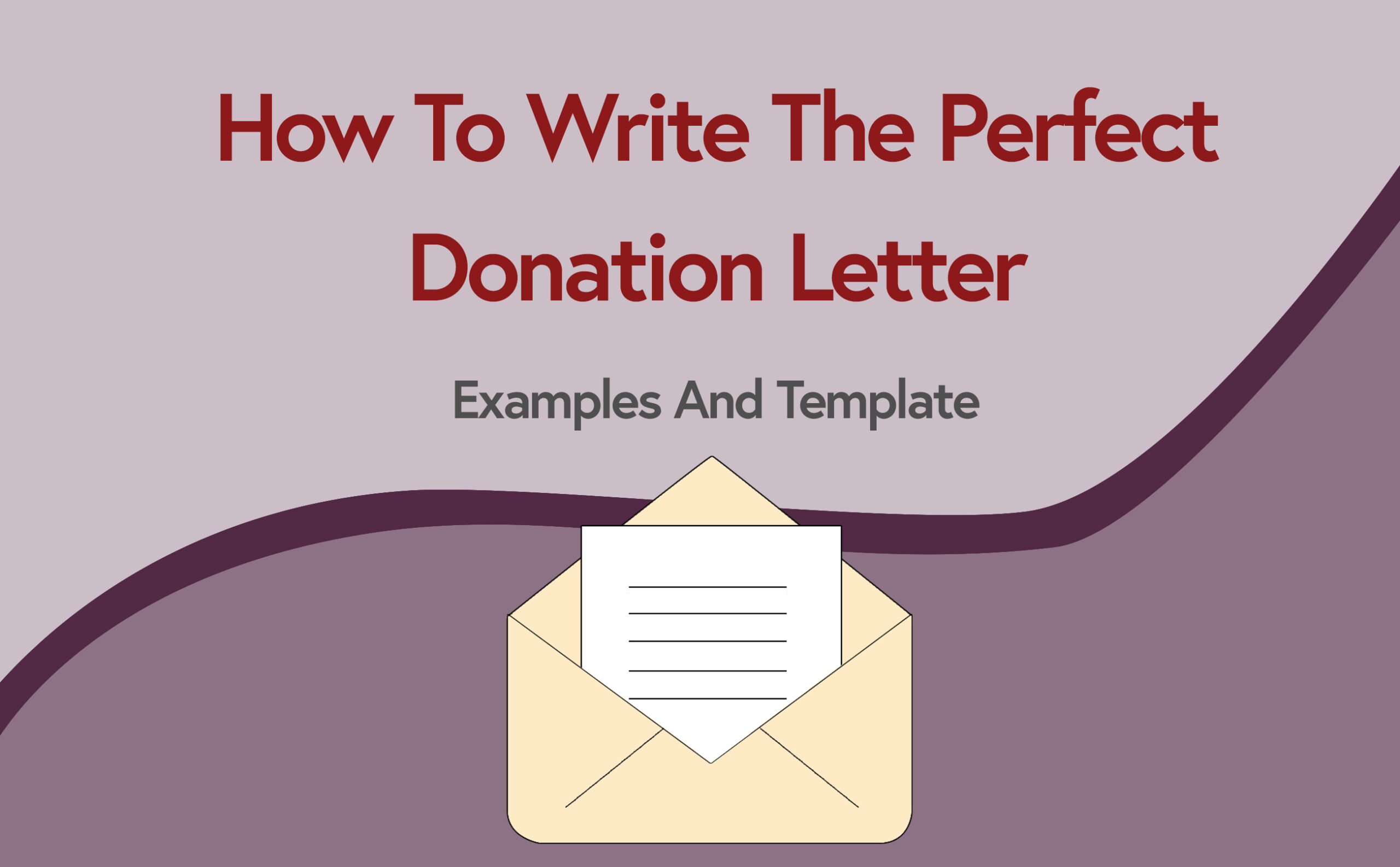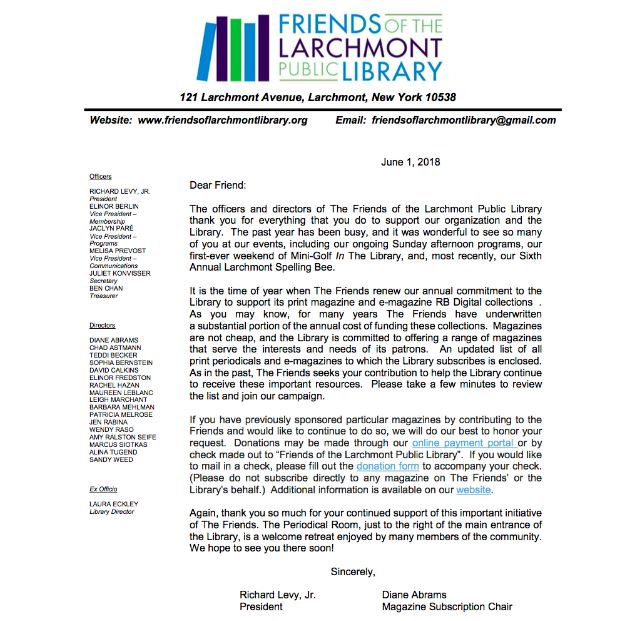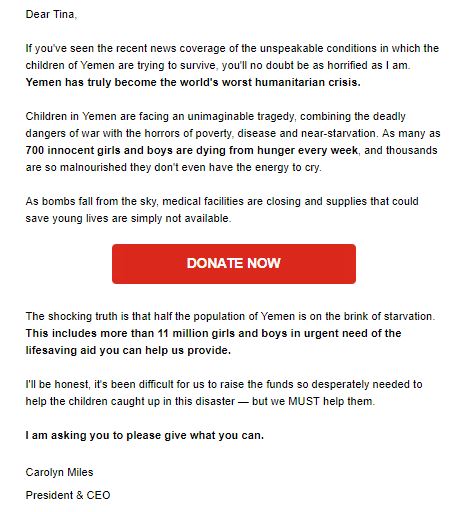


If you work in a nonprofit, you’re probably knee-deep in crafting your donation letters. After all, donation letters are one of the most effective ways to connect with your supporters and inspire them to contribute to your nonprofit. Effective letters also deepen the trust between your nonprofit and supporters by highlighting where their financial gifts will go and what impact they will have. Now the question is: how do you get your donation letter to stand out from the crowd? Truth be told, everything from your intended audience to your donation letter format matters if you want to attract donors. So, in this post, I’m breaking down how to write a donation letter. I’ll also highlight two stellar nonprofit donation letters, provide you with a sample donation request letter and share some best practices to help you along your letter-writing journey. If you’d like to skip down to the template, click here . Otherwise, read on!
Although they’re fairly short and don’t necessarily have the depth of your typical pamphlet or other marketing materials, donation letters address the specific need a nonprofit is trying to meet. Many letters also include basic information about the overall organizational impact and acknowledge a donor’s past philanthropic efforts, much like you’d include on your donation website .
As an essential part of a nonprofit’s fundraising strategy, these letters engage your supporters and show how their gifts will make a difference. By committing to transparency and outlining where funds will go, donation letters also help build trust with your supporters.
Consider the power of donor intent . This refers to how your supporters want their gifts to be used. For instance, a donation made towards a scholarship fund needs to be used for that purpose. Honoring donor intent and showing exactly how donations are used reinforces the trust supporters have in your nonprofit.
In a nutshell, donation letters are meant to inform your supporters about your efforts and ultimately encourage donations.

Fundraising letters generally fall into two separate categories: individual and corporate appeals. Wondering what the difference is — and why it matters? Read on!
As the name suggests, individual appeals are donation letters directed to individual donors. This category also includes couples and families who give collectively.
You know those letters you receive in the mail from March of Dimes, the ASPCA and the World Wildlife Fund? Those are individual appeals! Individual appeals are personalized to a donor or family and usually request a one-time or recurring gift . Appeals can be geared for everyday donations, or a specific campaign, like #GivingTuesday , depending on your nonprofit’s needs.
Corporate appeals are a type of donation letter sent to businesses. Nonprofits can reach out to local, national and international small, medium and large companies. Often, nonprofits may choose to find a business whose mission aligns with theirs or those that have a history of supporting nonprofits.
Although the audience is different, corporate donation letters are structured similarly to individual appeals. Many nonprofits write in-kind donation letters to corporations requesting contributions. In-kind donations can include gift certificates for a raffle, employee gift matches and corporate sponsorship .
For example, if you want to supply pizza for a volunteer thank-you party and are looking for a local pizza parlor to provide the pizza in-kind, you’d write a corporate appeal.
This type of donation letter often focuses more heavily on the benefit to the organization donating and how it helps their business goals. For the example above, you could say that your volunteers will now recognize the pizza parlor that donated and will be more likely to eat there in the future.
Corporate giving is also great for diversifying your revenue streams . By getting support from several businesses or corporations, you can earn more revenue, expand your network and increase your nonprofit’s stability.

While the goal of your donation letter is to inspire people to give, it also creates the opportunity for you to deepen your relationship with supporters .
I’ll show you how to craft an engaging letter that showcases the great work you do, resonates with long-time and new donors and shows supporters how they can make a difference.
From past donors to potential ones, you likely have a wide audience that you can reach out to. Your donation letter should reflect the audience you’re speaking to. That’s where segmentation comes in.
By segmenting your letters, you can tailor their content to capture your audience’s unique preferences and interactions with your nonprofit. For example, you can thank regular donors for their continuous support and encourage future donations from them.
You can segment your audience by:
Telling an impactful story is an effective way to resonate with your audience. If someone is new to your nonprofit, start by explaining your mission. Share the cause you’re championing, the community you support and the goals you want to achieve.
For people familiar with your nonprofit, you can tell the story of a recent project. In this case, break down the issue your nonprofit wanted to tackle, your team’s solution, the people helped and how your supporters’ donations made this work possible.
To make your stories more impactful, get quotes, pictures and videos of your team or the community you help. For instance, a team member can discuss how meaningful their work is and a community member can show the difference your nonprofit has made in their life.
You likely have a specific objective that you’re raising money for, like a resource or event. Make sure that you clearly detail the reason your nonprofit needs donations and why it matters. Having a concrete understanding of what they are contributing to can make your audience more likely to donate.
Imagine that your nonprofit wants to give individualized coaching to public school teachers. Tell your audience how this initiative will benefit teachers and students. Also, be specific about how donations will be used for this program, such as for hiring coaches and buying classroom resources.
Your recipients have likely been asked for donations by countless organizations. Use personalization to make your audience feel appreciated and have your letter stand out from the crowd.
The more personal you can make your fundraising letter, the more likely your recipient will donate. Use information you have about your audience, like their name and giving history, when writing your letter. Having a donor database makes gathering and leveraging this information easy.
Your donation letter’s visuals also play a major role in connecting with your supporters. When formatting your donation letter, make sure that you use fonts and colors that are easy to read and match your nonprofit’s branding.
Visuals are another great way to demonstrate your nonprofit’s impact. For instance, you can include pictures of the people you helped, your team at work and infographics that illustrate your nonprofit’s progress.
Before your recipients even send a gift, be sure to thank them for their time and consideration when reading the donation letter.
No matter the size of their gift, sincerely thank your donors for their contribution. Later, follow up with your donors by sending another message that shows how their contributions support your work and uplift the community you serve.
Make sure that your donation letters are as impactful as possible by proofreading and editing them. Be on the lookout for any typos and confusing sentences. Reading your donation letter out loud will also help you catch errors.
As you review your letter, put yourself in the mind of your audience. Ask yourself if it’s clear why your nonprofit is looking for donations, how the funding will be used and exactly how recipients can support your nonprofit through monetary gifts or in-kind donations.
Every time you send a donation letter, you should be gathering and organizing data about its performance. Having a robust donor management tool will streamline this process and let you drill down into the details. For example, you can measure the letter’s response rate and the total amount raised.
This data is essential for optimizing future donation letters and learning more about your supporters. Plus, you can leverage valuable information about your audience, like their gifting history, to deepen your donor relationships .
Now you may be asking: What should a donation letter say?
Donation letter content varies from every nonprofit and even each fundraising campaign you run. But there’s good news. The core elements of donation letters for nonprofits will always stay the same.
These foundational components include:
Header: Include your nonprofit’s name and branded logo if you have one.
Nonprofit Contact Information: Include your physical address and phone number. Listing a contact person, nonprofit website, and email address, although helpful, is optional.
Date: Include the date when you plan to mail/email the letter.
Donor Salutation: Address your donor by their preferred name. Decide whether you prefer a formal salutation such as “Dear Mr. and Mrs. Richard Smith,” or a more informal one like “Hi Rick.”
Acknowledgement of Donor Relationship: At the beginning of your letter, recognize your relationship with the donor. Understandably, this is difficult if you’re working with a donor base of hundreds, if not thousands. If you don’t have the time or capacity to personalize each letter, segment your donors based on previous interactions, like lapsed donors, current donors, volunteers, board members, etc.
A simple donation letter sample can start with, “You’ve been a big part of our organization’s fabric over the years. We can’t thank you enough for your support as a donor, and a frequent volunteer.” This lets your donor know that you recognize and appreciate their past commitments.
Nonprofit Story: Your story is the hook that connects your reader to your mission on an emotional level.
For your donation letter, your story should follow this format:
Call to Action: You’re sending this letter to bring in donations, so reinforce that message! At the end of your donation letter, write a clear, direct call to action, outlining exactly what you want from your reader. Don’t assume they know what you’re looking for.
Thank and Sign: Finish your letter by thanking your recipient for considering a gift and signing it. Ignore the temptation to sign from your organization. Instead, choose an employee, board member, or key volunteer to represent the collective whole. This helps promote the ideal “human-to-human” element you’re aiming for and reinforces the personal connection between you and your donor.

Whether you work at a small, hyper-local nonprofit or an international organization, you’ll need to create fundraising appeals for every campaign.
Before you get started distributing appeals, there are important questions to consider.
At the end of the day, you’ll need to consider how long your campaign lasts, the response rate of your typical donor and your urgency when crafting a donation letter plan.
Now it’s time to start writing your own donation letter! To get you started, here’s a donation request letter template using the framework covered above, plus an example letter. Just click the link, enter your email and you’re good to go! Once you’re in the document, make a copy for yourself to enable editing.
If you want a little more inspiration, here are two letters I’ve received lately that inspired me to donate.

This donation letter receives high marks for its structure, content, and overall appearance. Although this copy doesn’t speak to a specific donor, it does address their past support, current happenings at the library, and the current need. The ways to give are clear and precise, and the letter ends on a very high note, with a solid “thank you.”

This email is stellar because it follows a traditional donation letter format, but appeals to someone reading an email (as opposed to a physical letter). It begins with an informal yet personal salutation, speaks to a timely world issue (bonus!), mentions their need, the solution, and concrete ways the organization is helping, a direct call to action, and a personal plea. Finally, it’s signed by a person. It’s easily absorbable, personal, and timely.
I know that there are many things to keep in mind when it comes to crafting engaging donation letters. To guide your writing, follow these four essential best practices:
Donation letters need plenty of TLC, but do you know what the best part of the writing process is?
Once you write a solid donation letter template, you can build on it for all your future campaigns.
There’s no time like the present to perfect your donation letter and stand out among the crowd. You’ve got this!
Ready to elevate your fundraising software next? Check out this article: How to Fundraise in 13 Steps: Why it Matters + The Software You Need